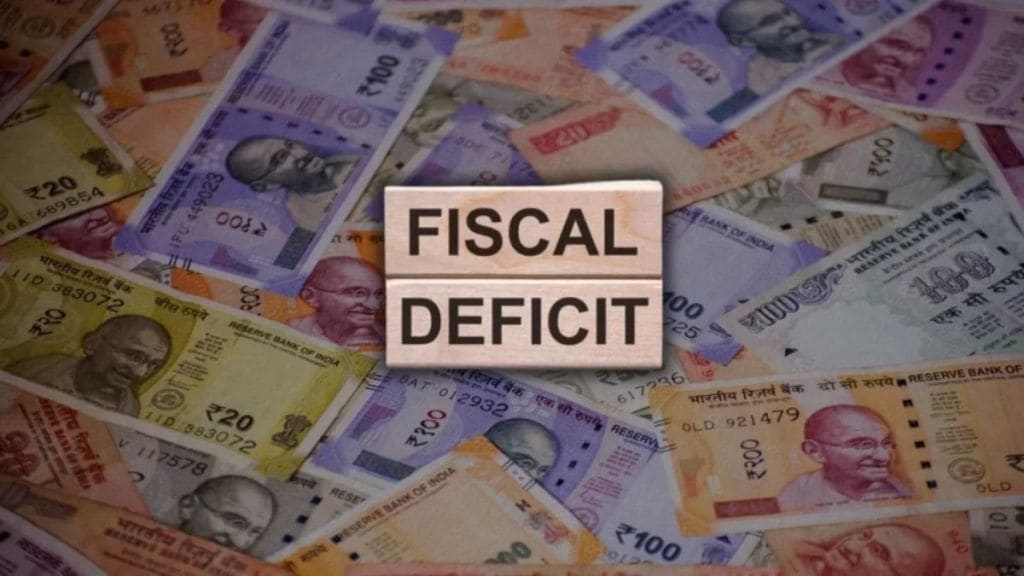Despite a projected tax revenue shortfall and higher subsidy spending in 2025-26, the government is confident that “scheme savings” and robust non-tax revenues will fully offset the gap, keeping the fiscal deficit on track to fall to 4.4% of GDP from 4.8% in FY25, sources told FE.
The additional negative fiscal impact is seen at around Rs 1.15 lakh crore, going by the extra subsidies estimated for food and fertiliser, compensation to oil marketing companies (OMCs), and likely net tax revenue shortfall due to income tax relief and goods and services tax (GST) relief announced recently.
Going by the gross tax revenue receipts (GTR) in H1FY26, the GTR shortfall could be Rs 1-1.3 lakh crore in FY26. Assuming that there will be some improvement in tax collections in H2 due to increased consumption from direct and indirect tax cuts, the net tax revenue shortfall (post 42% tax devolution to states and J&K) is seen at around Rs 50,000 crore in FY26. Usually, the Centre collects 47-48% of the annual target in H1, but this time around it is lower at 44% of the annual target of Rs 42.7 lakh crore.
With an asking rate of over 21% in H2FY26 to meet the FY26BE, rating agency ICRA is apprehensive that gross tax revenues will undershoot the budgeted target of Rs 42.7 lakh crore by Rs 0.7-1 lakh crore, its chief economist Aditi Nayar said.
As in previous years, the additional expenditure on subsidies is often required to deal with global commodity prices reflecting geopolitical dynamics. So, the Centre is estimated to incur about Rs 28,000 crore in additional fertiliser subsidy over the FY26 budget estimate (BE) of Rs 1.67 lakh crore and around Rs 22,000 crore more for food subsidy over the BE of Rs 2.03 lakh crore. Additionally, the Centre will provide around Rs 15,000 crore to state-run oil marketing companies (OMCs) in FY26 to compensate them for losses in domestic cooking gas for not passing on the rise in costs to consumers.
This fiscal impact of Rs 1.15 lakh crore (0.3% of GDP) is definitely a concern for government managers, but not a headache, going by the cushion built into the Budget of Rs 50.65 lakh crore for FY26. Going by the trends in the last couple of years, the government could save Rs 50,000-90,000 crore in centrally sponsored schemes and other schemes in FY26.
The Centre is now routing funds for all centrally sponsored schemes (CSS), with an aggregated annual budget outlay of Rs 5 lakh crore, through the Reserve Bank of India platform instead of state treasuries, to curb the floating of funds and rein in borrowings. In FY25, the Centre reduced the outlay on CSS by a whopping Rs 91,000 crore or 18% of the BE for the schemes due to the discovery of Rs 1.6 lakh crore in unspent balances with them from previous transfers, reflecting a lack of absorptive capacity in states. Officials expect a similar scenario this year as well.
“The typical trend of expenditure savings and higher-than-budgeted non-tax revenues is likely to absorb the shortfall on the taxes front, as well as additional expenditure requirements on some items such as the fertiliser subsidy. Consequently, we do not foresee a material slippage vis-à-vis the GoI’s FY2026 fiscal deficit target of 4.4% of GDP at the current juncture,” Nayar said.
The record-high dividend by the Reserve Bank of India at Rs 2.69 lakh crore, or around Rs 50,000 crore more than factored in the FY26BE, and around Rs 20,000 crore in extra dividends from other state-run firms, could fetch the Centre around Rs 70,000 crore more in non-tax revenue in FY26.
“Non-debt capital receipts and non-tax revenue performance in the first half have been very good and may surpass the FY26 budgeted amount,” said India Ratings chief economist Devendra Kumar Pant.
The fiscal arithmetic of a 4.4% fiscal deficit in FY26 looks challenging; however, the government is expected to achieve it with some rationalisation of expenditure, Pant added.
Given that the strategic disinvestment of IDBI Bank is expected to materialise in FY26, the government’s estimate of Rs 47,000 crore from disinvestment and asset monetisation could exceed the target.


